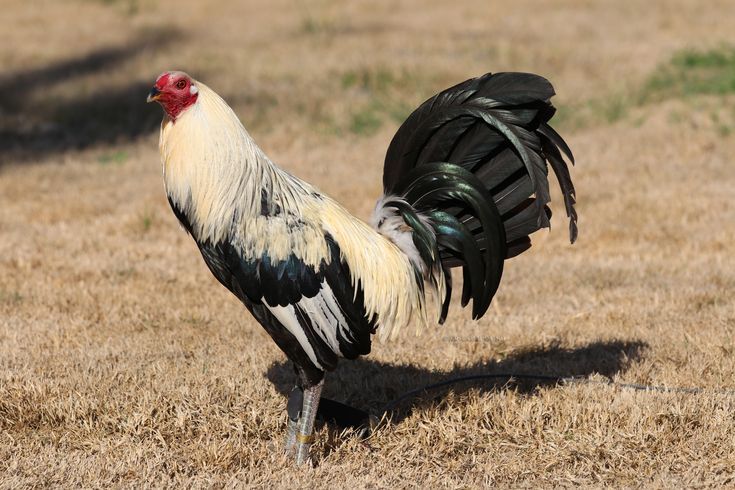Are you a fan of gamefowl and interested in learning more about the Clement Grey bloodline? Look no further! This blog post will dive into the origins, characteristics, related strains, crosses, and fighting styles of one of the most popular gamefowl breeds – the Clement Grey. Whether you’re a seasoned breeder or just starting out in cockfighting, this article has something for everyone. So, let’s jump right in and explore the fascinating world of Grey Gamefowl!
Clement Grey Gamefowl Origins
The Clement Grey Gamefowl has a rich history, dating back to the early 1900s. It is said that the strain originated in North Carolina, where it was developed by a man named J. D. Clemmons.
Clemmons was known for his expertise in breeding gamefowls and his eye for selecting birds with superior fighting qualities. He began breeding various strains of gamefowl until he finally created what we now know as the Clement Grey.

The Clement Grey is believed to be a cross between several different breeds, including Mugs, Hatch, and Albany. The resulting bird was known for its strength, endurance, and aggressive fighting style, which made it a popular choice among cockfighters.
Over time, the Clement Grey bloodline spread throughout the United States, becoming one of the most sought-after strains in cockfighting circles. Today, breeders continue to maintain this impressive lineage through careful selection and breeding practices.
Despite being over a century old, the popularity of Clement Grey shows no sign of waning anytime soon – proof that quality bloodlines do stand the test of time!
Clement Grey Gamefowl Characteristics
Clement Grey is a breed that stands out for its unique characteristics. One of the most distinctive features of this bird is its color, a beautiful grey with black stripes on the feathers. They also have red eyes and yellow legs.
In terms of weight, Clement Grey can weigh between 5-6 pounds, making them average-sized fowl compared to other game birds. Their legs are typically yellow, and they have small single combs.
The comb on their head is not as large or pronounced as some other breeds but still regulates their body temperature. The hens are more subdued than roosters, but both sexes share similar colors.
Clement Grey Gamefowl exude an aura of elegance due to their majestic coloring and distinctive features. If you want to add variety to your flock’s aesthetic appeal while maintaining strength and agility traits synonymous with game fowls, consider adding these beauties to your collection!
Related Strains to Clement Grey
Several gamefowl strains are related to the Clement Grey bloodline. One is the Clemmons Grey, developed by Walter Kelso and Bobby Payton in 1942. The Clemmons Grey combines the Lacy Roundhead, McLean Hatch, and Duke Hulsey.
Another related strain is the Butcher from JBL Farm. It was created by Johnnie Jumper using his Out-and-Out Kelso as its base. The Butcher also has some Hatch blood due to crossbreeding with Sweater McGinnis Greys.
The Gilmore Hatch or Gilliam Gilmore hatch is another strain that shares some of its lineage with Clement Grey. This breed originated when Jerry Hughes crossed a Boston Roundhead stag with a Harold Brown grey hen.
Furthermore, Carol Nesmith developed the Sweater McGinnis Greys. These fowls were derived from crosses between Sweaters and Herman Pinnon fowl like Albany, Melsims Black, Blueface, etc., and then blended with other breeds over time.
These related strains have unique characteristics but share similarities with Clement Grey due to their common ancestors or crossbreeding history.
Clement Grey Gamefowl Crosses
Clement Grey Gamefowl is a popular strain known for its pure bloodline and fighting ability. However, breeders often cross this line with other strains to create new gamefowls with desirable traits.
One common cross of the Clement Grey with the Hatch bloodline produces offspring that are agile and possess strong legs, making them excellent fighters in short-range battles.
Another popular mix is with the Kelso breed. The result is a gamecock with the speed and power of both breeds, making it a challenging opponent in any fight.
The Albany breed can also be crossed with Clement Grey to produce chickens with good endurance, that can last longer during fights.
When it comes to breeding crosses involving Clement Greys, it’s essential to consider carefully which lines will complement each other’s strengths best. Breeders aim for game fowls that combine agility, power, endurance, or intelligence while permanently preserving their stamina.
When done correctly by experienced breeders who know what they’re doing, crossing breeds results in unique hybrids that bring out the best qualities of both strains while maintaining high standards expected from original bloodlines like Clement Grey gamefowl or Clemmons Grey.
Clement Grey Fighting Style
As you can see, the Clement Grey gamefowl bloodline has a rich history and unique characteristics that make it stand out among other gamefowl strains. However, one of the most important aspects of any gamefowl is its fighting style.
The Clement Grey is known for their exceptional agility and deadly accuracy in the ring. They are quick on their feet and have a hard-hitting punch that can easily take down opponents. Their fearless nature makes them fierce competitors, but they require careful handling by experienced breeders.
The Clement Grey gamefowl strain continues to be popular among breeders and enthusiasts due to its stunning appearance, impressive lineage, and undeniable fighting skills. Whether you’re interested in breeding them or just learning more about this fascinating breed, there’s no denying that the Clement Grey is an essential part of gamefowl history.
See Also:
- Feeding Gamefowl: Everything You Need to Know
- Frost Grey Gamefowl History and Fighting Style
- Gavilan Hatch Gamefowl Bloodline Profile
- Chocolate Grey Gamefowl Bloodline Profile and Fighting Style
- Cobra Asil Gamefowl Bloodline Profile and Fighting Style
